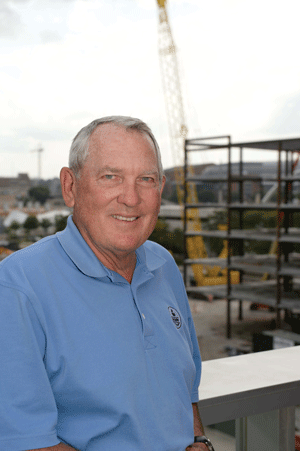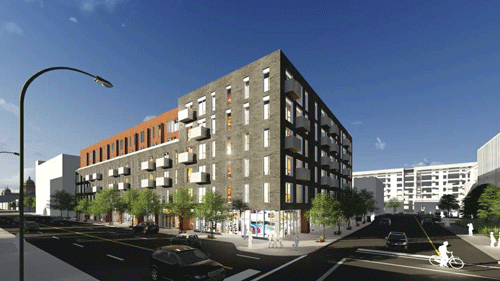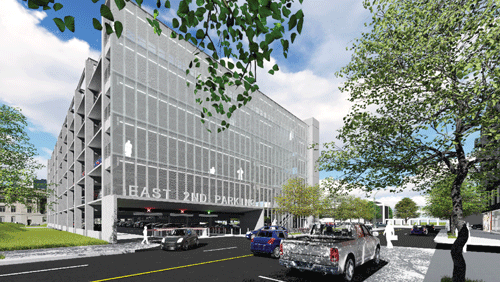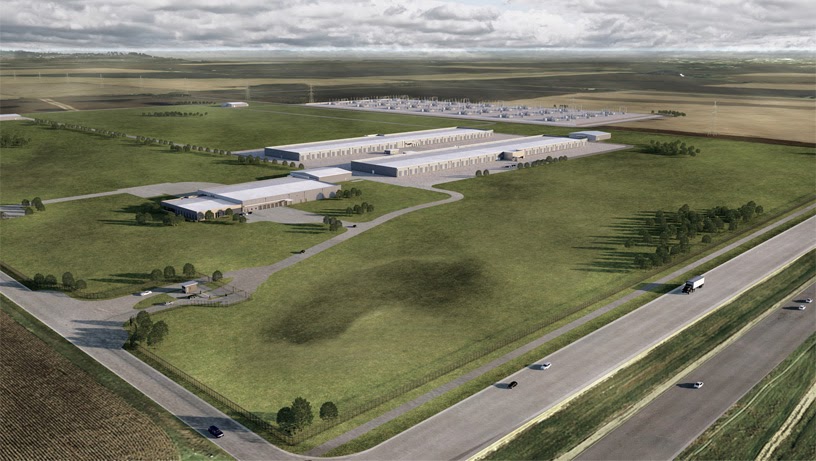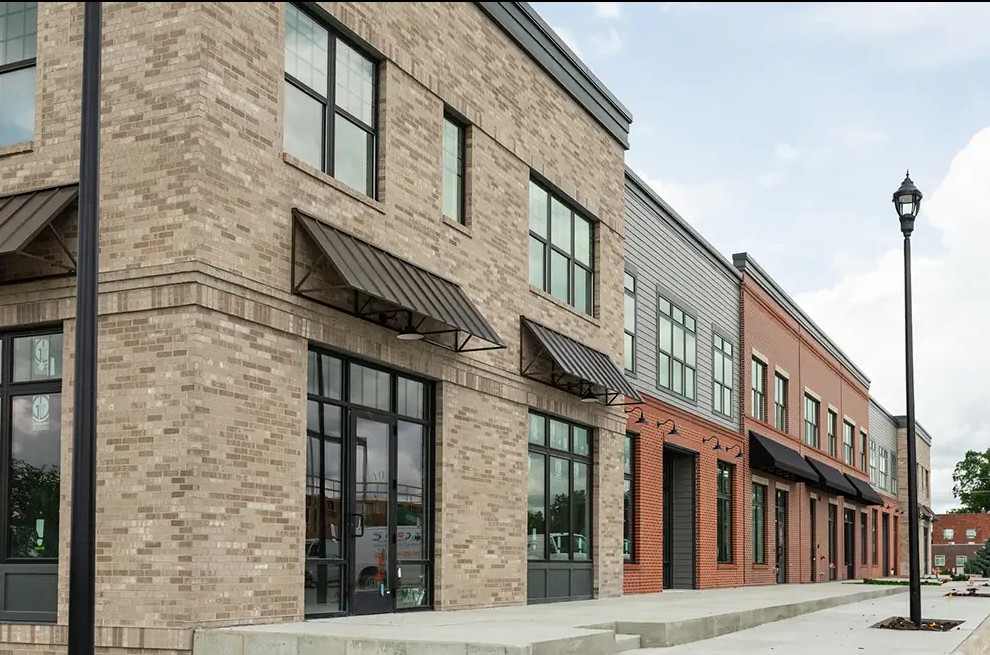Now starting at quarterback, Jim Cownie
He leads a development team that is reshaping East Village

KENT DARR Sep 2, 2016 | 11:00 am
9 min read time
2,158 wordsBusiness Record Insider, Real Estate and DevelopmentJim Cownie has a bird’s eye view of the East Village from his office, and these days that view is filled with projects that are driven by a crew of development overachievers that he has assembled.
It’s an interesting lot, made up of an optimist, a realist, a skeptic, a man of many questions and a quarterback, said Paul Hayes, a longtime Cownie associate who is president of JSC Properties Inc., the real estate firm that Cownie established nearly three decades ago.
With Cownie playing the role of quarterback — his son, Sloan, is the skeptic, by the way — this team is behind a major development that will convert more than two full city blocks of parking lots into offices, apartments, retail shops and a parking ramp that will alleviate parking woes for a range of customers, from residential and commercial tenants to East Village visitors.
The superstructures for the parking ramp, on the former Des Moines City Hall parking lot, and one of the mixed-use buildings, on a Cownie-owned parking lot nearby, now are rising out of the ground.
What you don’t see are the efforts by Cownie and crew to acquire more parcels of land in the East Village proper and its cousin to the south,
the Market District of East Village. Cownie said he has been a day or an hour late on acquiring some of that property, but he is working on more.
Besides Hayes, Jim and Sloan Cownie, the team is balanced out by developers Jake Christensen, the realist in the group, and Tim Rypma, the optimist.
Rypma worked with Cownie on developing 350 E. Locust St., a stylish mixed-use building where JSC Properties has a penthouse office that provides sweeping views of the East Village and downtown Des Moines. Rypma is a longtime friend of the Cownie family; he once cut the grass at their home in the South of Grand neighborhood. “He was a big part of our family,” Sloan Cownie said.
Christensen lives across the street from Cownie in that same neighborhood. The two men met when Cownie crossed the street and introduced himself. It was a meeting that Christensen had hoped to initiate.
Family, family friends, longtime business associates add a personal touch to a development team that is steeped in professional accomplishments.
Christensen and Rypma were among the first developers to recognize the potential of the East Village. Both had their mentors, and both have left signature projects.
Christensen can count e300 — known to most people as the home of Zombie Burger at 300 E. Grand Ave. — and 505 E. Grand, a commercial building that most people know as the home of Raygun, the T-shirt shop that proclaims itself The Greatest Store in the Universe, among his many East Village projects.
Rypma was part of the team that redeveloped what is called the Studio Block on the north side of the 500 block of East Grand Avenue, as well as buildings on the 400 block on East Locust. He partnered with Cownie on 350 E. Locust, a property that Rypma discovered while walking his dog.
Hayes has worked at JSC Properties since 2004 when he left the accounting firm RSM after 29 years as managing director. Hayes pinches the pennies when they need to be pinched.
Sloan Cownie is a broker with Iowa Realty Commercial. What he brings to the table is an understanding of his father’s vision for East Village. In addition, he can fill buildings the team develops with retail and office tenants.
“I understand my father’s vision for what he wants in the East Village, and can act as a go-between with these guys,” Sloan Cownie said. “Nobody understands the East Village better than Tim Rypma and Jake Christensen.”
As for Jim Cownie, well “nobody can put a team together like Jim Cownie,” Hayes said.
When he first formed a real estate company in 1988, at the time it was called JSC Farms Inc., Cownie was heavily under the influence of master land broker and developer Bill Knapp and his leadership team at Knapp Properties Inc. Cownie and Knapp are investment partners in a range of projects.
“The Knapp guys have been through this over and over, so I have studied at the feet of the masters,” Cownie said.
The “this” that Knapp Properties has been through many times over is buying, selling, developing and managing property. Knapp will manage the properties that are being developed in the City Hall parking lot and at 219 E. Grand Ave., where Knapp was once an investment partner.
Knapp Properties has an open invitation to participate in another JSC Properties project. The Cownie team is the private development crew for the city of Des Moines’ preferred location for a $140 million federal courthouse near the Des Moines River between East Second and Fourth streets. The site is made up of land that is owned by the city and MidAmerican Energy Co.
“I hope that the Knapp guys are full partners with whatever might happen on the courthouse site, and certainly they are invited to do that,” Cownie said.
Cownie has been in discussions for several years with MidAmerican about the private development potential for the utility’s 11 acres of land along the riverfront that is used for its fleet maintenance division.
Those conversations dovetailed with preference of federal judges and the city of Des Moines to have the long-rumored courthouse located near the river. The federal Government Services Agency is mulling the city’s proposal. A spokesman would not say whether alternate sites have been submitted.
Matt Anderson, the assistant Des Moines city manager who leads economic development efforts, said that having a private developer on board — JSC Properties would develop any land inside the 12-acre parcel that has been proposed for the federal courthouse — helps iron out any wrinkles.
“The feds don’t want to be on an island in an industrial park,” Anderson said. “They want to see new restaurants sitting right next to them. That made a lot of sense to us. It made sense to partner up with one single developer. It gives this site a little more punch as they are weighing other sites.”
Anderson said that development of a federal courthouse and privately held amenities in the area “advances us 10 years” on the planning and buildout of the Market District.
“It’s the kick in the pants to get us moving and get our public works facilities moved to a temporary or permanent location,” he said. The deal also will give the city another building that can be used for public office space or sold for development, and that is the old federal courthouse on East Walnut Street. The federal government plans to give the building to the city.
This brings us to Jim Cownie, the quarterback of the development team, according to his partners.
There is little question that Cownie could rest on past accomplishments. In 1970, at age 26, he co-founded Heritage Cablevision. By the mid-1980s, it was the 10th largest cable television company in the United States.
He sold the company in the late 1980s for nearly $900 million and was instantly a very wealthy man.
Cownie said anyone fortunate enough to be in that situation has several options.
“You can either take on a lot of risk and make passive investments in companies that are run by somebody else, or even more boldly you can buy companies and try to manage them,” he said. “But real estate is something that almost everybody is attracted to. You don’t have the problems. You have balance sheet problems, but you don’t have the operating problems in real estate that you have in some of these other endeavors. You don’t have the people disappointments that come with that. So I really like real estate, and down deep I really like building things.”
He also really likes Des Moines. He has been a fundraiser for a 50-meter swimming pool at the Wellmark YMCA in downtown Des Moines. He has helped push all of the buttons that led a land swap that placed the YMCA in its current location, the Polk County Justice Center in a former Wellmark warehouse and led to the development of a convention center hotel near the Iowa Events Center.
So what is his vision in putting together a team that on the face of it is something of a celebrity cast of developers helping to solve a parking problem? We’ll let Sloan Cownie answer for his father.
“You can’t find a better quote for Jim Cownie than ‘I’m going to leave things better than I found them,’” he said.
Parking ramp provides ‘heartburn’ and relief
When the city of Des Moines decided to partner with a private developer to build a parking garage, it was a decision that came with complications.
Once the project is completed, the city will have a new $20 million parking garage. Two office buildings that will flank the ramp will go on the tax rolls on the city-owned land. East Village residents and visitors will find it easier to park their vehicles. And, a sliver of land will remain along Robert D. Ray Drive for a City Hall annex of sorts, should studies determine that space is needed. All of that on one old parking lot.
But getting to the point where construction could begin was problematic.
“Every day in this process, there was a new issue,” said Matt Anderson, who leads the city’s economic development efforts. “You’d think you solved something and then a new issue would come up.”
This was a project that came to the city after business partners Jim Cownie and Paul Hayes teamed up with developers Jake Christensen and Tim Rypma and Cownie’s son, Sloan, a commercial real estate broker and came up with a development proposal for another parking lot at 219 E. Grand Ave, just to the north and east of the City Hall lot.
Their development of a $27 million, six-story mixed-use building at the site was going to eliminate parking that would be needed by the occupants of 98 apartments planned for the project, along with tenants for first-floor retail and office space.
Hayes said development of that ground had been several years in the making, but the lack of parking was a problem.
The Cownie team brought a solution to that problem to the city. It would build a 535-space parking ramp and sell it back to the city. As part of a phased project, the development team would build two office buildings on either side of the parking ramp, starting work on the first office building once the ramp was completed, projected for mid-2017.
Work is underway on the mixed-use building at 219 E. Grand and the parking lot, but for Anderson the process was a learning experience.
The city already had seen one development proposal for the City Hall parking lot scuttled by the recession. When a new development proposal arrived in May 2015 from the Cownie crew, one prominent developer cried foul. Hubbell Realty Co. President and CEO Rick Tollakson argued that the city should request proposals for development of the City Hall parking ramp. This was public property and the public should have a chance to
weigh in on its future, Tollakson argued.
A request for proposals was sent out, but no other proposals for the site were submitted.
The details of a development agreement had to be worked out with the Cownie team, which also included Neumann Monson Architects and Ryan Cos. US Inc. as the general contractor. That meant meeting with legal teams and those meetings would fill Cownie’s office with lawyers.
“Attorneys that specialize in engineering and public projects are not used to working in the fluid economic development world,” Anderson said. The city team learned that it needed to improve communications.
But there were other problems. For example, where would the city launch fireworks for its Fourth of July celebration? The Embassy Suites did not want ashes falling on its guests’ cars that were parked on the Locust Street bridge.
And there was the ever present issue of where would East Village workers, tenants and visitors park. As Hayes pointed out, East Village residents can’t be expected to park in the street forever.
“Parking, you can’t underestimate the impact that it has on someone’s life. That causes a lot of heartburn and some of that can be alleviated with better communications,” Anderson said.
The project has resulted in an almost “daily soap opera” of issues, he said.
Those issues are an indication of the high degree of interest in the East Village.
“One thing that helps with the short-term pain is that, man if you can get through the next 12 months, it’s going to be incredible,” Anderson said.
Rendering of 219 E. Grand Ave. mixed-use development by Neumann Monson Architects.
Rendering of new City Hall parking garage by Neumann Monson Architects.

